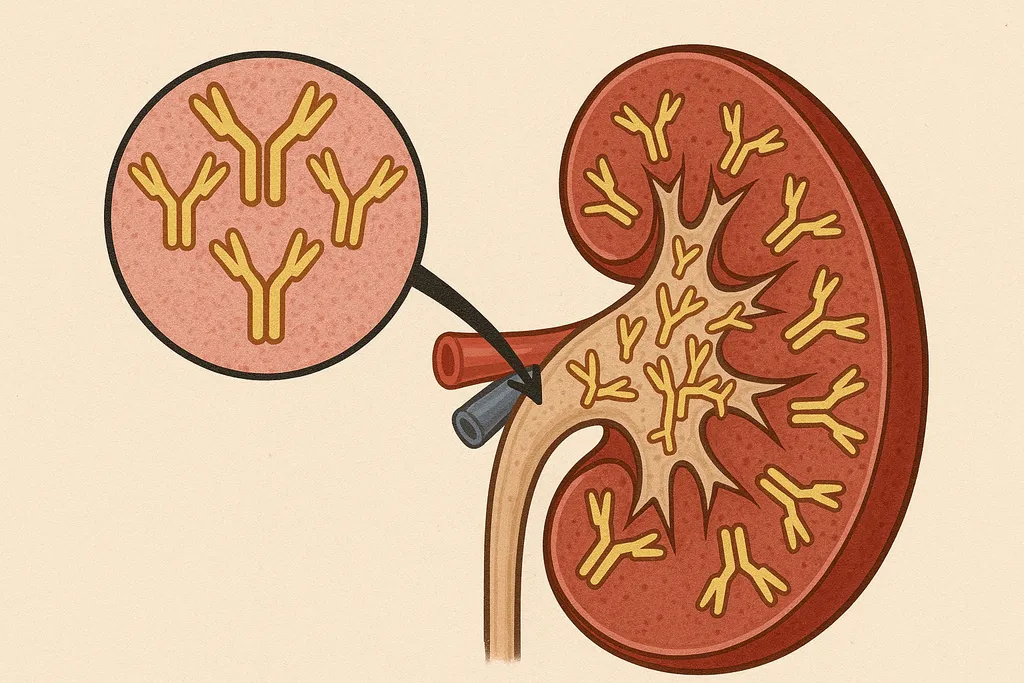MC Community Event: A New Drug for Relapsed/Refractory Myeloma Patients: Melflufen

Melflufen (PEPAXTO®) is one of the newest FDA-approved drugs available to relapsed and refractory multiple myeloma patients across the nation. Dr. Agne Paner, multiple myeloma specialist from Rush University, aided the Myeloma Crowd Community Program by HealthTree's successful launch of the Relapsed/Refractory Myeloma Patients Chapter. She shared her experience on the Phase II HORIZON study (using the intravenous drug melflufen with the oral dexamethasone), and efficiently and clearly explained the mechanisms of the drug and who qualifies for it.
Recorded earlier this month, the video below contains not only Dr. Paner's uncomplicated and informative presentation but also a moderated Q&A session where a variety of questions concerning the drug (and other similar treatments) are answered.
Agne Paner, MD, Rush University, Chicago, IL: A New Drug for Relapsed/Refractory Myeloma Patients: Melflufen
Introductions: 0:00-2:35
- Launch of the Relapsed/Refractory Myeloma Patients Chapter, moderated by Jenny Ahlstrom and presentation by Agne Paner, MD
- Dr. Paner is an Associate Professor of Medicine in the Multiple Myeloma and Amyloidosis Program at Rush Medical College, she had hands-on experience in the HORIZON (melflufen + dex) Trial, the first doctor to treat patients with PEPAXTO® in the United States, has treated myeloma for over 10 years.
Presentation: 2:35-30:45
Introduction to Melflufen:
- Melflufen is also known as melphalan flufenamide
- Classes of drugs: where does melflufen fit in?
- Melflufen is an alkylator
- Melphalan (not to be confused with melflufen) is also an alkylator, grandfather drug from the 1960's, prevalent in stem cell transplants
- Three other main drug classes are immunomodulatory drugs (imids), proteasome inhibitors (PIs) and Anti-CD38 monoclonal antibodies.
- Well-known imids are: lenalidomide (REVLIMID®) and pomalidomide (POMALYST®)
- Well-known PIs are: bortezomib (VELCADE®), ixazomib (NINLARO®), and carfilzomib (Krypolis®)
- Well-known monoclonal antibodies are: daratumumab (DARZELEX®) and recently approved isatuximab (SARCLISA®)
- These 3 classes of drugs (imids, PIs, and monoclonal antibodies) are standard care, patients should be exposed to at least one drug in each of these classes,
- When patients become refractory (or stop responding) to these three classes of drugs, we call them triple class refractory.
- When patients also become refractory to both PIs and daratumumab, they are known as penta refractory.
- There are new agents that can be better/more innovative treatments within the same class of drugs, and there can also be other novel therapies outside of these drug mechanisms that target myeloma cells in a new way.
- Some of these new drug therapies/mechanisms include Anti BCMA therapies like belantamab mafodotin (BLENREP), Car T cell therapy, and BiTes, or XPO1 inhibitors such as selinexor (XPOVIO®).
- Melflufen's mechanism of action is significantly different than other drugs in its class as an alkylator and it attacks myeloma differently than the imids, PIs or monoclonal antibodies.
- Melflufen is an alkylator
Terminology in clinical trials: what do we need to know?
- What phase is the trial in?
- Phase 1: testing to see if the drug is safe, only open for those that don't have any other option, determine what dose balances the effectiveness of the drug with the toxicity
- Phase 2: the trial goal is to determine how active and effective the drug is. Efficiency is determined by response rate. The overall response rate (ORR) is the key finding in Phase 2 trials. Patient numbers in these trials are usually low, below 100.
- Phase 3: much larger of a study, usually randomized with one standard treatment arm and another experimental treatment arm.
- Phase II of the HORIZON trial led to the FDA approval of melflufen with dexamethasone.
- Patient Population
- treatment for relapsed/refractory patients
- had to have had 4 lines of therapy (meaning that they had relapsed previously three other times)
- had to be refractory to at least one of the 3 main drug classes (imids, PI, or monoclonal antibodies)
- Primary Endpoint
- the goal of the study
- what it's set to prove scientifically
- usually the ORR (overall response rate) in Phase II clinical trial
- Overall Response Rate (ORR)
- how many patients have at least a partial response rate or better
- how many patients had at least a 50% reduction rate in their tumor (or m-spike)
- Phase II trials typically see a 20% response rate (meaning 1 in 5 patients shrunk their monoclonal protein/tumor by 50% or more).
- Progression-Free Survival (PFS)
- how long the patient remained in remission after the treatment
- an average number that's concluded whether they responded to the treatment or not
- Overall Survival (OS)
- how long patients lived after starting the treatment
- this is the golden indicator- if you can prove the therapy improves OS, that's a valuable therapy
- Adverse Events
- side effects during clinical trials
- can't interfere too much with the quality of life, must be a balance between effectiveness and risk of treatments
Mechanism of melflufen- how it works
- Melflufen is a peptide conjugated drug and an alkylator
- The peptide carried helps the drug penetrate the cell - the alkylator is the drug that treats the cell
- Myeloma cells are protein factories that produce monoclonal proteins (m-protiens/m-spike), these cells are also rich in something called aminopeptidase enzymes which are designed to destroy the protein.
- Once the melflufen enters the cell, the aminopeptidase enzymes are able to get rid of the peptide carrier (what made the cell soluble and able to pass through the myeloma cell's wall).
- The alkylating agent from the melflufen is then released and can target the nucleus of the myeloma cell, destroying the genetic information of the cancer cell.
- Because it has shed its peptide carrier, it is now stuck in the cell and becomes a beacon to more of the drug.
- This is one of the key reasons that melflufen has very low reported side effects- the mechanism is designed so that the drug only targets the myeloma cells and doesn't end up in the bloodstream or other organs.
- This mechanism of action allows a high concentration of drug within the cancer cell- even 50% more times than melphalan
HORIZON trial information
- 157 patients
- had to be refractory to either Pom or Dara and have a previous line of therapy
- melflufen was given every 4 weeks through a catheter/port intravenously
- the primary endpoint of the trial was ORR (overall response rate), although they did look at other factors as well
- the patient profiles showed them to be very sick, triple-refractory patients with high risk extramedullary disease (tumors growing outside the bloodstream)
Findings
- Primary endpoint was an ORR of 29%, above the standard of most Phase II trials of 20%
- The clinical benefit rate (CBR) meaning that the patients had 1/3 of the tumor or m-spike shrink or stable disease was 45%
- the overall response rate for triple class refractory was 26%
- duration of response was 5 1/2 months
- most patients responded quickly within 2 months, although wellbeing improved within a mere couple of weeks
- Progression-free survival (PFS) was 4.2 months
- PFS in patients with at least partial response was 8.5 months
- OS (overall survival) was 11.6 months
- OS in patients with at least partial response was 17.6
- In conclusion, you have about 1/3 of a chance to respond to the treatment and can be in remission on average 6 months if not longer
Side Effects
- Low platelets and low white cell blood counts reported
- These low blood counts are to be expected for an alkylator drug
- Can be quite severe
- No other significant side effects were reported, which is extremely motivating for patients who may have been through many treatments and therefore experienced many side effects
- It's a well-tolerated drug, apart from the low blood counts
- of these low blood counts, only 16% had some form of bleeding and less than 3% reported significant bleeding
- 30% reported infection, and 10-11% of patients reported a severe infection
- this is comparable to most myeloma treatments
Questions and Answers: 30:45-1:00:00
Outro Announcements: 1:00:00- 1:03:27
We are grateful to Dr. Agne Paner for sharing her time and her expertise with us.
We invite you to participate in the next session of our Relapsed/Refractory Myeloma Patients Chapter where we will be discussing a practical approach to CAR T cell therapy. Dr. Nina Shah of UCSF Health will be presenting to us on May 18th at 12 PM Eastern. Click the button below to sign up.
To learn more about melflufen, you can also register for our upcoming Myeloma Crowd Round Table this Saturday, April 24th:
You can also learn more about melflufen by clicking the links below:
- Melflufen (PEPAXTO®) Receives FDA Approval for Relapsed/Refractory Multiple Myeloma
- Oncopeptides' Expanded Access Program for melflufen
- A Melflufen Update in Multiple Myeloma
- A New and Different Approach to Treat Triple Class Refractory Multiple Myeloma
- A Mid-Year Update with Paul Richardson, MD, Dana Farber Cancer Institute
Thanks to our Myeloma Crowd Community sponsors
 .
.  .
.  .
. 
 .
.  .
. 

Melflufen (PEPAXTO®) is one of the newest FDA-approved drugs available to relapsed and refractory multiple myeloma patients across the nation. Dr. Agne Paner, multiple myeloma specialist from Rush University, aided the Myeloma Crowd Community Program by HealthTree's successful launch of the Relapsed/Refractory Myeloma Patients Chapter. She shared her experience on the Phase II HORIZON study (using the intravenous drug melflufen with the oral dexamethasone), and efficiently and clearly explained the mechanisms of the drug and who qualifies for it.
Recorded earlier this month, the video below contains not only Dr. Paner's uncomplicated and informative presentation but also a moderated Q&A session where a variety of questions concerning the drug (and other similar treatments) are answered.
Agne Paner, MD, Rush University, Chicago, IL: A New Drug for Relapsed/Refractory Myeloma Patients: Melflufen
Introductions: 0:00-2:35
- Launch of the Relapsed/Refractory Myeloma Patients Chapter, moderated by Jenny Ahlstrom and presentation by Agne Paner, MD
- Dr. Paner is an Associate Professor of Medicine in the Multiple Myeloma and Amyloidosis Program at Rush Medical College, she had hands-on experience in the HORIZON (melflufen + dex) Trial, the first doctor to treat patients with PEPAXTO® in the United States, has treated myeloma for over 10 years.
Presentation: 2:35-30:45
Introduction to Melflufen:
- Melflufen is also known as melphalan flufenamide
- Classes of drugs: where does melflufen fit in?
- Melflufen is an alkylator
- Melphalan (not to be confused with melflufen) is also an alkylator, grandfather drug from the 1960's, prevalent in stem cell transplants
- Three other main drug classes are immunomodulatory drugs (imids), proteasome inhibitors (PIs) and Anti-CD38 monoclonal antibodies.
- Well-known imids are: lenalidomide (REVLIMID®) and pomalidomide (POMALYST®)
- Well-known PIs are: bortezomib (VELCADE®), ixazomib (NINLARO®), and carfilzomib (Krypolis®)
- Well-known monoclonal antibodies are: daratumumab (DARZELEX®) and recently approved isatuximab (SARCLISA®)
- These 3 classes of drugs (imids, PIs, and monoclonal antibodies) are standard care, patients should be exposed to at least one drug in each of these classes,
- When patients become refractory (or stop responding) to these three classes of drugs, we call them triple class refractory.
- When patients also become refractory to both PIs and daratumumab, they are known as penta refractory.
- There are new agents that can be better/more innovative treatments within the same class of drugs, and there can also be other novel therapies outside of these drug mechanisms that target myeloma cells in a new way.
- Some of these new drug therapies/mechanisms include Anti BCMA therapies like belantamab mafodotin (BLENREP), Car T cell therapy, and BiTes, or XPO1 inhibitors such as selinexor (XPOVIO®).
- Melflufen's mechanism of action is significantly different than other drugs in its class as an alkylator and it attacks myeloma differently than the imids, PIs or monoclonal antibodies.
- Melflufen is an alkylator
Terminology in clinical trials: what do we need to know?
- What phase is the trial in?
- Phase 1: testing to see if the drug is safe, only open for those that don't have any other option, determine what dose balances the effectiveness of the drug with the toxicity
- Phase 2: the trial goal is to determine how active and effective the drug is. Efficiency is determined by response rate. The overall response rate (ORR) is the key finding in Phase 2 trials. Patient numbers in these trials are usually low, below 100.
- Phase 3: much larger of a study, usually randomized with one standard treatment arm and another experimental treatment arm.
- Phase II of the HORIZON trial led to the FDA approval of melflufen with dexamethasone.
- Patient Population
- treatment for relapsed/refractory patients
- had to have had 4 lines of therapy (meaning that they had relapsed previously three other times)
- had to be refractory to at least one of the 3 main drug classes (imids, PI, or monoclonal antibodies)
- Primary Endpoint
- the goal of the study
- what it's set to prove scientifically
- usually the ORR (overall response rate) in Phase II clinical trial
- Overall Response Rate (ORR)
- how many patients have at least a partial response rate or better
- how many patients had at least a 50% reduction rate in their tumor (or m-spike)
- Phase II trials typically see a 20% response rate (meaning 1 in 5 patients shrunk their monoclonal protein/tumor by 50% or more).
- Progression-Free Survival (PFS)
- how long the patient remained in remission after the treatment
- an average number that's concluded whether they responded to the treatment or not
- Overall Survival (OS)
- how long patients lived after starting the treatment
- this is the golden indicator- if you can prove the therapy improves OS, that's a valuable therapy
- Adverse Events
- side effects during clinical trials
- can't interfere too much with the quality of life, must be a balance between effectiveness and risk of treatments
Mechanism of melflufen- how it works
- Melflufen is a peptide conjugated drug and an alkylator
- The peptide carried helps the drug penetrate the cell - the alkylator is the drug that treats the cell
- Myeloma cells are protein factories that produce monoclonal proteins (m-protiens/m-spike), these cells are also rich in something called aminopeptidase enzymes which are designed to destroy the protein.
- Once the melflufen enters the cell, the aminopeptidase enzymes are able to get rid of the peptide carrier (what made the cell soluble and able to pass through the myeloma cell's wall).
- The alkylating agent from the melflufen is then released and can target the nucleus of the myeloma cell, destroying the genetic information of the cancer cell.
- Because it has shed its peptide carrier, it is now stuck in the cell and becomes a beacon to more of the drug.
- This is one of the key reasons that melflufen has very low reported side effects- the mechanism is designed so that the drug only targets the myeloma cells and doesn't end up in the bloodstream or other organs.
- This mechanism of action allows a high concentration of drug within the cancer cell- even 50% more times than melphalan
HORIZON trial information
- 157 patients
- had to be refractory to either Pom or Dara and have a previous line of therapy
- melflufen was given every 4 weeks through a catheter/port intravenously
- the primary endpoint of the trial was ORR (overall response rate), although they did look at other factors as well
- the patient profiles showed them to be very sick, triple-refractory patients with high risk extramedullary disease (tumors growing outside the bloodstream)
Findings
- Primary endpoint was an ORR of 29%, above the standard of most Phase II trials of 20%
- The clinical benefit rate (CBR) meaning that the patients had 1/3 of the tumor or m-spike shrink or stable disease was 45%
- the overall response rate for triple class refractory was 26%
- duration of response was 5 1/2 months
- most patients responded quickly within 2 months, although wellbeing improved within a mere couple of weeks
- Progression-free survival (PFS) was 4.2 months
- PFS in patients with at least partial response was 8.5 months
- OS (overall survival) was 11.6 months
- OS in patients with at least partial response was 17.6
- In conclusion, you have about 1/3 of a chance to respond to the treatment and can be in remission on average 6 months if not longer
Side Effects
- Low platelets and low white cell blood counts reported
- These low blood counts are to be expected for an alkylator drug
- Can be quite severe
- No other significant side effects were reported, which is extremely motivating for patients who may have been through many treatments and therefore experienced many side effects
- It's a well-tolerated drug, apart from the low blood counts
- of these low blood counts, only 16% had some form of bleeding and less than 3% reported significant bleeding
- 30% reported infection, and 10-11% of patients reported a severe infection
- this is comparable to most myeloma treatments
Questions and Answers: 30:45-1:00:00
Outro Announcements: 1:00:00- 1:03:27
We are grateful to Dr. Agne Paner for sharing her time and her expertise with us.
We invite you to participate in the next session of our Relapsed/Refractory Myeloma Patients Chapter where we will be discussing a practical approach to CAR T cell therapy. Dr. Nina Shah of UCSF Health will be presenting to us on May 18th at 12 PM Eastern. Click the button below to sign up.
To learn more about melflufen, you can also register for our upcoming Myeloma Crowd Round Table this Saturday, April 24th:
You can also learn more about melflufen by clicking the links below:
- Melflufen (PEPAXTO®) Receives FDA Approval for Relapsed/Refractory Multiple Myeloma
- Oncopeptides' Expanded Access Program for melflufen
- A Melflufen Update in Multiple Myeloma
- A New and Different Approach to Treat Triple Class Refractory Multiple Myeloma
- A Mid-Year Update with Paul Richardson, MD, Dana Farber Cancer Institute
Thanks to our Myeloma Crowd Community sponsors
 .
.  .
.  .
. 
 .
.  .
. 


about the author
Audrey Burton-Bethke
Audrey is a content writer and editor for the HealthTree Foundation. She originally joined the HealthTree Foundation in 2020. Audrey loves spending time with her supportive husband, energetic four-year-old, and new baby.
More on HealthTree Programs
Trending Articles




Get the Latest Multiple Myeloma Updates, Delivered to You.
By subscribing to the HealthTree newsletter, you'll receive the latest research, treatment updates, and expert insights to help you navigate your health.












